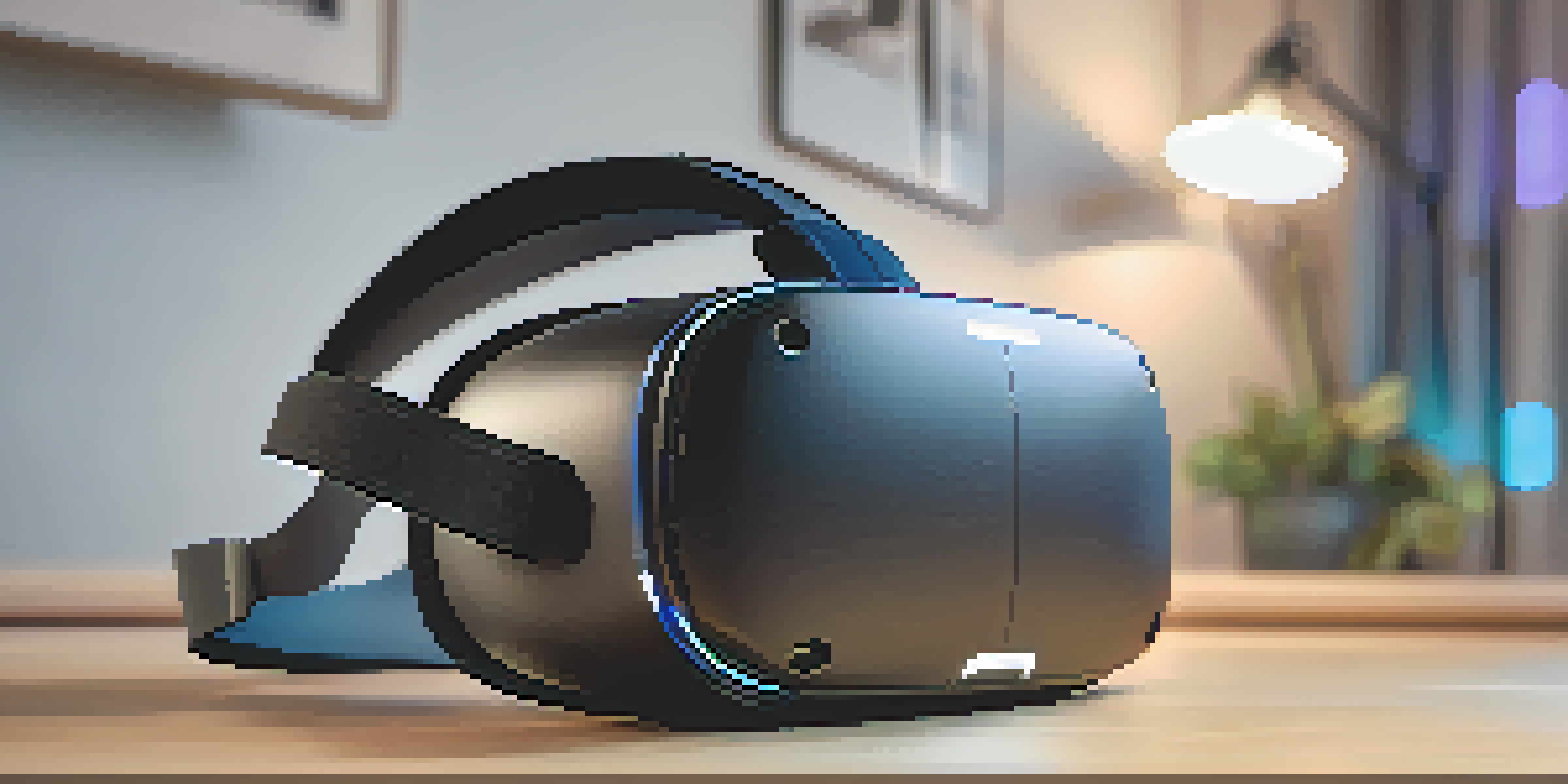The Evolution of VR Hardware: What to Expect in 2024

A Brief History of VR Hardware Development
Virtual Reality (VR) has come a long way since its inception in the 1960s. Early devices were bulky and expensive, often limited to research environments. Fast forward to the 21st century, and we see a surge of consumer-friendly options that have made VR accessible to the masses.
Virtual reality is not just a technology, it’s a new way of experiencing reality.
Key milestones, such as the launch of the Oculus Rift in 2016, sparked a revolution in the gaming and entertainment sectors. Companies began to invest heavily in VR technology, leading to innovations in graphics, tracking, and user experience. This evolution has set the stage for what's to come in 2024.
As we look back, it’s clear that VR hardware has transitioned from niche products to essential tools in various fields, including gaming, education, and healthcare. Understanding this journey helps us appreciate the exciting developments on the horizon.
Current State of VR Hardware in 2023
In 2023, VR hardware is more sophisticated than ever, with devices offering high-resolution displays and improved motion tracking. Leading brands like Meta, HTC, and Sony have each released headsets that cater to different needs, from casual gamers to professional users. The competition has driven innovation, resulting in more powerful and user-friendly devices.

Wireless technology has also become a standard feature, creating a seamless experience that allows users to move freely without being tethered. This freedom enhances immersion, making experiences feel more lifelike. Additionally, advancements in haptic feedback technology are adding a new layer of realism to VR interactions.
VR Hardware Evolution Since the 60s
Virtual Reality has transformed from bulky, expensive devices in the 1960s to sophisticated, consumer-friendly options in 2023.
However, challenges remain, such as the need for more comfortable designs and longer battery life. Developers are continually working on these pain points, setting the stage for even better hardware in the near future.
Emerging Trends in VR Hardware for 2024
As we approach 2024, several trends are expected to shape the future of VR hardware. One significant trend is the rise of standalone headsets that do not require a powerful PC or console to operate. This shift will make VR even more accessible to a wider audience, allowing for more spontaneous and casual use.
The future of VR is not just about gaming; it’s about creating immersive experiences across all sectors of life.
Another trend is the integration of augmented reality (AR) features into VR devices. This hybrid approach can create richer experiences, blurring the lines between virtual and real worlds. Imagine playing a VR game that also overlays digital elements onto your physical surroundings!
Finally, AI-driven enhancements are likely to play a crucial role in improving user experience and personalization. From smarter avatars to adaptive environments, AI can help create immersive worlds that respond intuitively to user actions.
The Role of 5G in Advancing VR Hardware
The rollout of 5G technology is expected to have a transformative impact on VR hardware. With faster data speeds and lower latency, 5G can enable more complex and interactive VR experiences. This means smoother graphics, quicker load times, and a more immersive experience overall.
Imagine playing a multiplayer VR game where every action is synchronized in real time, regardless of your physical location. This level of connectivity could revolutionize social gaming and virtual interactions, making them far more engaging.
Comfort and Ergonomics Matter
Improving ergonomics and comfort in VR headsets is essential for enhancing user experience and encouraging longer usage.
Furthermore, the ability to stream high-quality VR content directly to devices could lessen the need for high-end hardware. Users might find they can access a full VR experience without investing in expensive equipment, broadening the market even further.
Advancements in Ergonomics and Comfort
Comfort is a critical factor influencing user adoption of VR technology. As more people engage with VR for extended periods, manufacturers are focusing on ergonomics to enhance user comfort. Expect to see lighter headsets with improved weight distribution and adjustable features for better fit.
Companies are also exploring materials that reduce heat and improve breathability, addressing one of the common complaints about VR headsets. These advancements will allow users to enjoy longer gaming or learning sessions without discomfort.
Additionally, innovations such as customizable face padding and adjustable lenses are being developed to cater to individual user needs. This focus on comfort is essential for creating a more enjoyable and accessible VR experience for everyone.
The Impact of VR on Different Industries
VR hardware isn't just for gaming; its potential spans various industries, including education, healthcare, and real estate. In education, VR can create immersive learning environments that engage students in ways traditional methods can't. Imagine a biology class where students can explore the human body in 3D!
In healthcare, VR is being used for training medical professionals and even for pain management therapies. The ability to simulate real-world scenarios helps prepare doctors and nurses for challenging situations without the real-life stakes. This application shows just how versatile VR technology can be.
5G Will Revolutionize VR Experiences
The rollout of 5G technology promises to enhance VR by enabling faster data speeds and more interactive experiences.
Real estate agents are also leveraging VR to offer virtual tours of properties, allowing potential buyers to explore homes from the comfort of their couch. As VR technology continues to evolve, we can expect even more innovative applications across various sectors.
Looking Ahead: Predictions for VR Hardware in 2024
As we anticipate the future of VR hardware in 2024, we can expect a blend of improved functionality and accessibility. Enhanced graphics and processing power will likely push the boundaries of what VR can achieve, resulting in even more lifelike environments and experiences.
Moreover, the integration of cross-platform functionality will allow users to interact seamlessly across different VR devices. This could create a more unified gaming and social experience, where friends can connect regardless of the hardware they own.

Lastly, as consumer interest continues to grow, we may see more affordable options emerge, making VR technology accessible to a broader audience. This democratization of VR will likely drive innovation and creativity in content development, leading to a thriving ecosystem for users and developers alike.